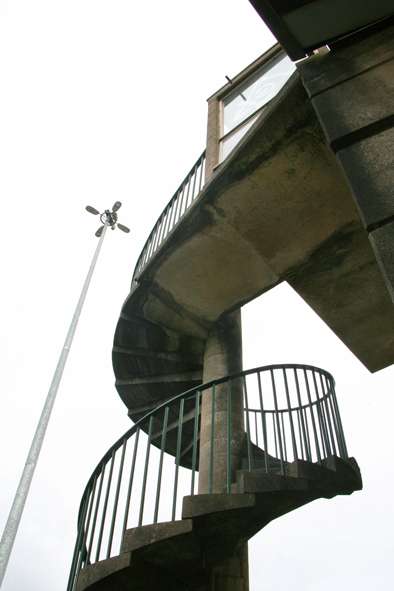The rotor palms sway on high-level galvanised-steel lighting poles, employing flexibility and high standards across the entire region. This was the first high mast lighting in the UK, using 25 metre masts and 1000W MBF/U lamps. Prevailing westerlies and wide angles make perpendicularity a problem. Lens correction and transformation rituals become routine in post [the sequence of connections of all unit circles is solved according to the shortest path principle.] We note that technology innovators [powered by advances in robotics, battery power, imaging, communications, sensing and artificial intelligence], are on the cusp of delivering new breakthrough capabilities. Effective energy management strategies are an important part of the equation, and the lights themselves [which could be lowered by winding gear] appear to have been replaced. Information which reaches us from remote light sources reveals events occurring in the remote past, whilst distance may be implied through selective juxtapositions and experiments in relative scale.
Across the ocean, similar trees presided over transplanted and commodified souls. Phylogenetic studies reflect the complex evolutionary history of the West Indies and no single biogeographical pattern emerges. Instead, we seek those angles best suited to pleasing silhouettes, whilst selectively omitting the profit-mansions on the cliff behind [a newer architecture overlaid]. The lights cast a retarded illumination where the revenues flowed - sticky with molasses and anaesthetised on baccy and rum. It was lucrative but risky business. The city is revealed to itself, recoiling in elegant disgust as the misery archive is slowly compiled [everyone was expected to work]. Light from the palms angles through the bond windows where pertinent records may be uncovered [unclear whether import data include customs duties]. Ventilation management should be a priority.
The oscillation may demonstrate accelerating fragmentation in pendant form. Under heavy rain and wind-rush, complete atomisation may occur. Shutter speeds must be considered carefully, with video capture eventually the more appropriate method. During periods of calm, the inverted rotors appear poised for memory-churn within The Basin. Strategic planting aims at comprehensive territorial illumination, but affords the upper carriageways clearer visibility. Down below, more perplexing, high-contrast geometries operate amongst historical assemblages of angular shadow [light mostly travels in straight lines but time adopts an increasingly cubist aspect]. Nevertheless, some undulation may also occur at the surface. At such times, waves ripple back across concrete undersides - resulting in a blending of narratives [i.e. not a story anymore but part of history].
Lost wanderers are easily misdirected down there - descending to forget their sufferings where edges and distances grow ambiguous [don’t be a statistic]. Others, after the hardships and severities they have experienced, indulge themselves ashore. We wanted to see how well-lit it might be and to search for an answer really. Whether despair or intoxication are the cause is yet to be ascertained [what lies beneath?]. The smallest bit of information could make a huge difference in our investigation so, even if you don’t think it is important, we encourage people to still get in touch with us. The project has now become one of identification.
The incident response was observed at a remove from multiple viewpoints. However effective the safety management regime is, marine incidents do occur. The first officer jogged along The Basin’s rim, peering into the water from a fragile walkway. Emergency vehicles of all colours followed in sequence [eyewitnesses reported a ‘huge crowd’ gathered near the water, with multiple ambulances and fire engines at the scene]. An exclusion was effected under flickering concrete. Delegations are no substitute for the duty holder being directly involved. The brute rattle of rotating blades announced a searching hover, but other factors played a part [economic and social as well as philosophical]. From the footbridge we were able to watch those lingering to reflect. They will be involved in the associated planning work, and in events that once failed to unfold. With the level raised, a small vessel may be retrieved from the lock.
To facilitate the necessary temporal transference, is it possible to lift this entire droning landscape on flimsy propellors? The path can be optimised by solving either the path-planning problem [PPP] or the coverage-planning problem [CPP]. In implementing this scheme, a key output will be to develop and publish a ‘future of flight’ plan, setting out the coordinated vision. Consideration should be given to the following points:
- Even on a warm day, the strategic framework is imbued with paternalist overtones - but is interesting as it presents the reader with the notion that savages can learn under proper supervision.
- Those entrusted with code-related responsibilities must be appropriately trained, experienced and qualified to undertake their duties This enables them to monitor situations in real time.
- The temperature in open water can remain very cold, causing a physical reaction which can make it difficult to control breathing.
The more drone functions become autonomous and intelligent, the greater the benefits and efficiencies will be. A transposition of readings might thus be enacted on the spatial plane, with new colonisations following as a result. Clearly, we need a smart, efficient ‘virtual infrastructure’ [air traffic management and ulcerated state systems], in order that the trajectory might be extended.
N.B: How remote is the control? We have identified a number of potential command posts, but in reality, the constant contact that was part of plantation life was seen as being demeaning.



























